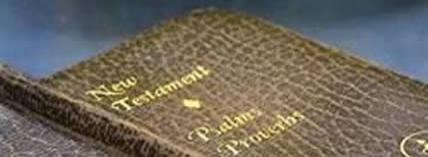C.S. Lewis's Approach to Apologetics
This seminar, though it will touch on some of the questions that plagued Lewis in his own pilgrimage to faith, is primarily concerned with Lewis’s approach to apologetics. Lewis was brilliant at shaping and honing a rational argument; but sensed that human beings are complex and more than merely rational creatures. Lewis’s method incorporated a wide range of approaches.
One encounters a self-effacing humility and honesty in his writing; he is not at all condescending in his apologetic work. Brilliant as he was, his arguments do not set him apart from his audience, but place him on the same road with his listeners as a fellow pilgrim. Furthermore, Lewis was a master at the use of the imagination; he was able to develop images and metaphors in order to help his audience grasp difficult concepts. He used analogies as an artist uses his brush. Lewis had a first rate mind and a poet’s power of expression.
I. Introduction to Lewis’s Apologetic Methods
II. Appealing to the Whole Person
A. George MacDonald’s Annals of a Quiet Neighborhood.
B. What Makes Up the Soul?
C. Perhaps Reason is the Weakest Facet of the Soul.
D. Romans 1:18 'We suppress the truth in our unrighteousness.'
III. 'Reality is Iconoclastic'
A. Explain the Concept.
B. It is an Old Idea.
C. Note the Difference Between Truth and Opinion.
D. The Place of Humility in the Pursuit of Truth – A Vital Feature of Lewis’s Apologetic Method.
E. Apologetics and Spiritual Health – Secure in the love of Christ.
1. Is pride the great sin? Could Lewis and Augustine be wrong?
2. What is antecedent to pride?
IV. The Use of Fiction in Apologetics
A. Definition Means 'Of the finite'.
1. We define things by their limitation and their function. Things defined must be distinguished from other things by virtue of their limitations. They must be small enough to wrap words around them in order to define them.
2. How do we define God? He stands outside the category of definition.
3. Jesus used simile to describe the Kingdom of Heaven; 'The Kingdom of Heaven is like…'
B. The Use of Metaphor.
1. The Pupil’s Metaphor.
2. The Master’s Metaphor.
3. Transposition.
4. The Hamlet-Shakespeare Illustration.
C. C.S. Lewis’s Practice in Using Fiction in His Apologetics 'The imaginative man in me is older and has been more continually operative than the rational man.' C.S. Lewis.
1. Lewis’s First Explicitly Christian Book was a Work of Apologetic Fiction: The Pilgrim’s Regress: An Allegorical Apology for Reason, Romance and the Christian Faith.
2. Out of the Silent Planet – 'Any amount of theology can be smuggled into people’s minds under the guise of romance', C.S. Lewis.
3. The Myth of Lewis’s retreat from the area of rigorous apologetic debate to escape into fiction after his debate with G.E.M. Anscombe at the Oxford Socratic Club.
a. Explain the circumstances of the debate and the falsehoods that grew up around it.
b. Lewis was always interested in both the rigorous academic approach to apologetics as well as the use of fiction.
c. 'Past watchful dragons.'
4. Summary
V. Conclusion
We apologise that there is a brief gap in the recorded audio about 15 minutes into this talk.
© 2006 Jerry Root
Dr Jerry Root carried out research on C.S. Lewis for his doctorate and has taught courses in philosophy and on C.S. Lewis for over ten years. He is the author of The Quotable Lewis.



